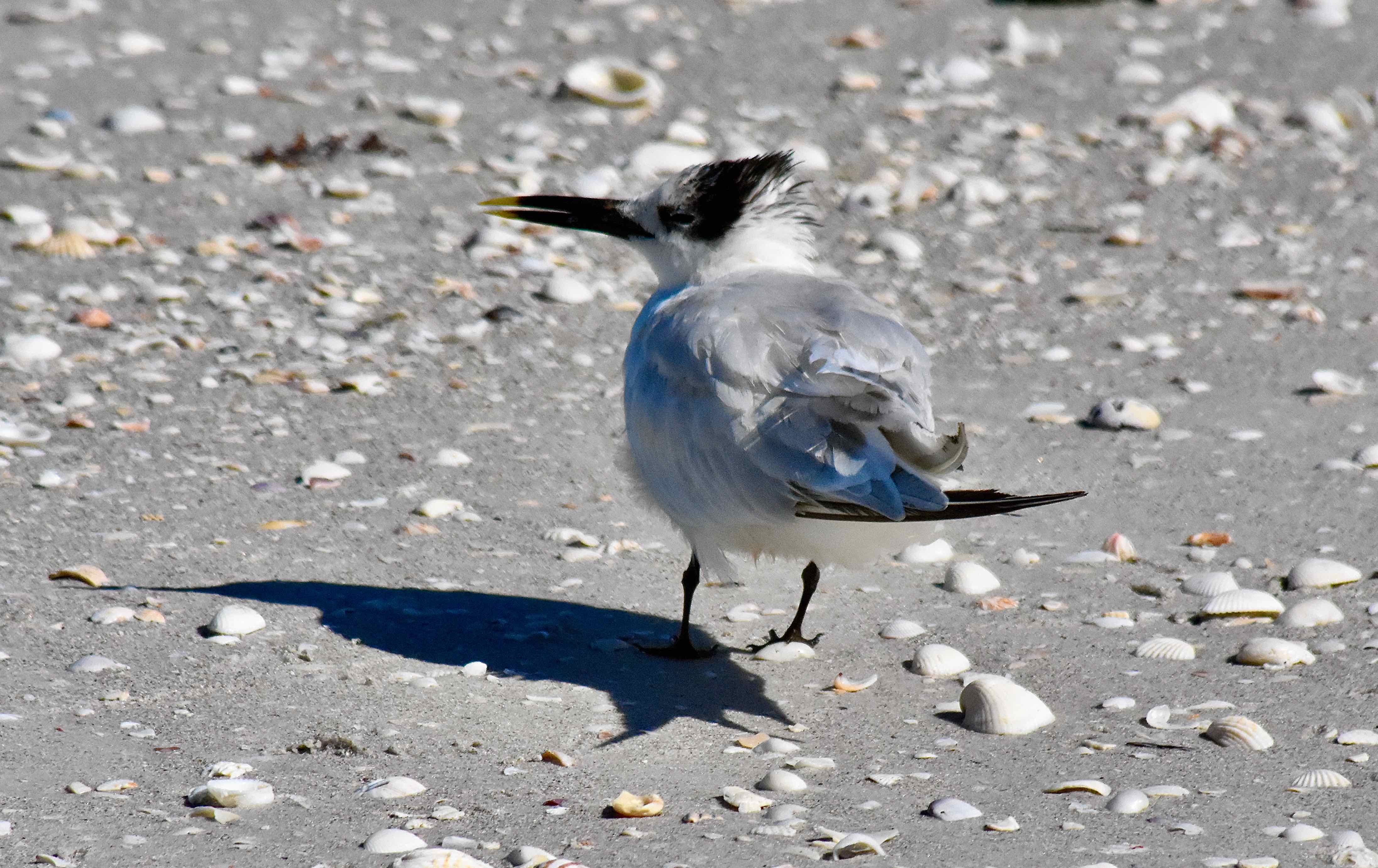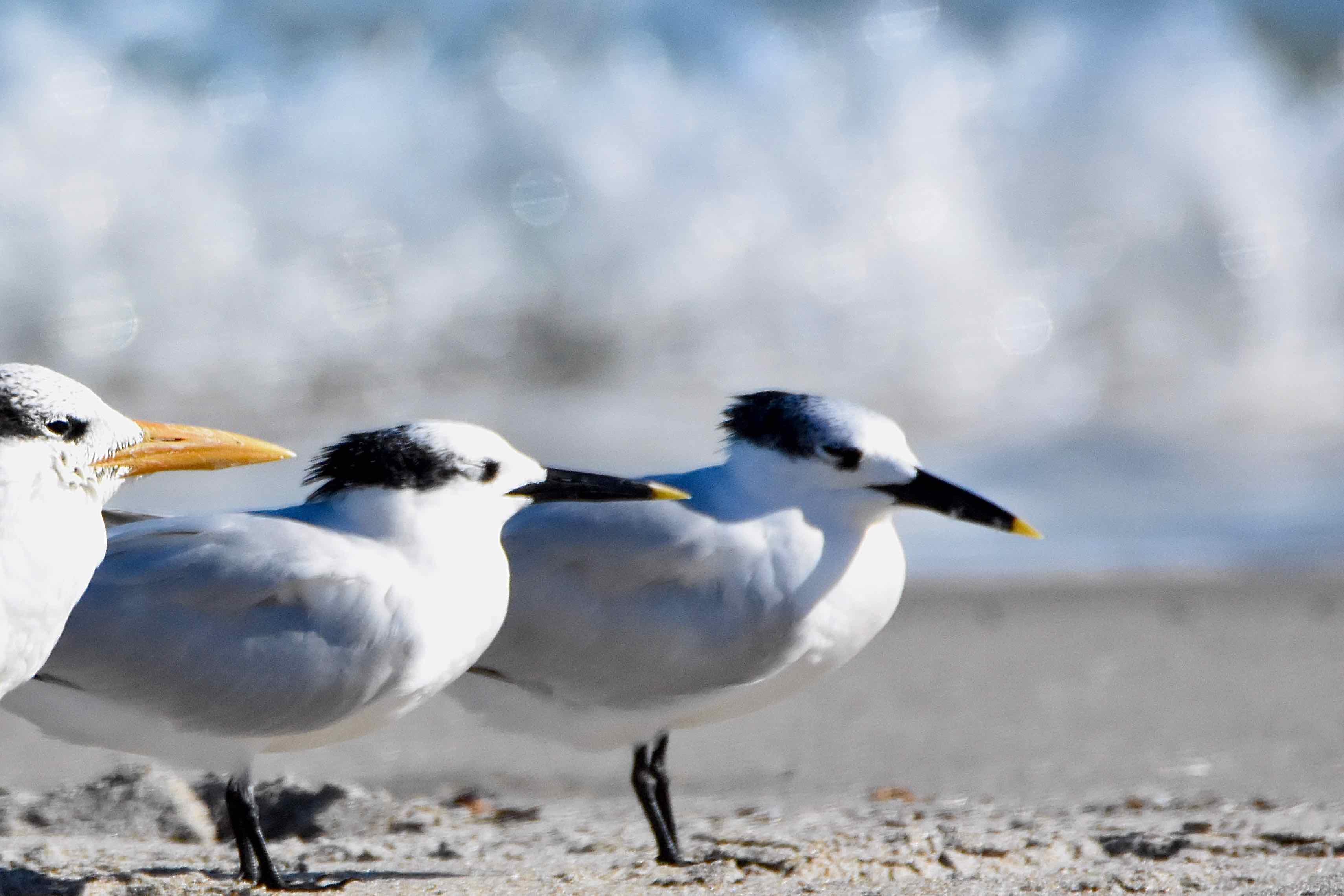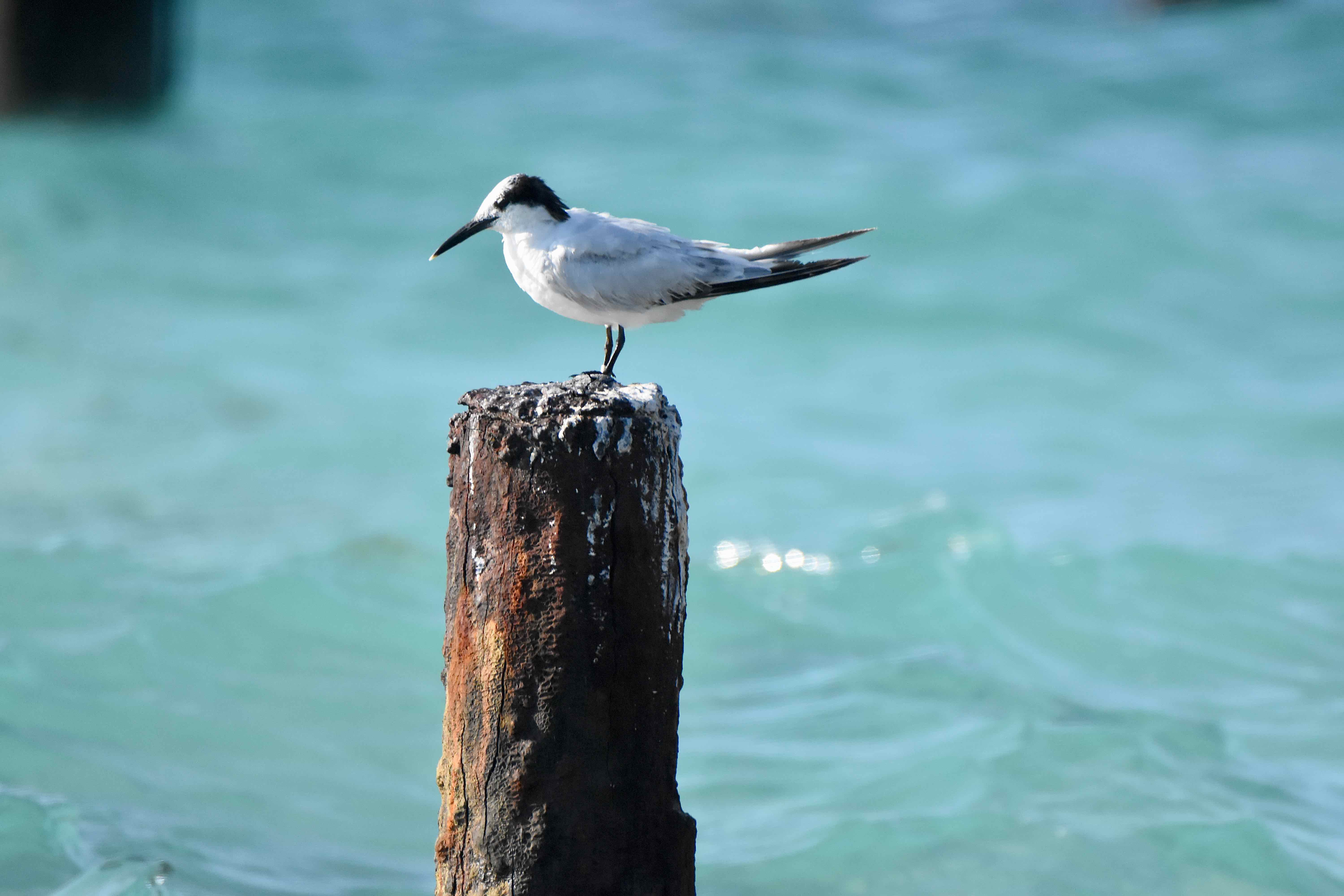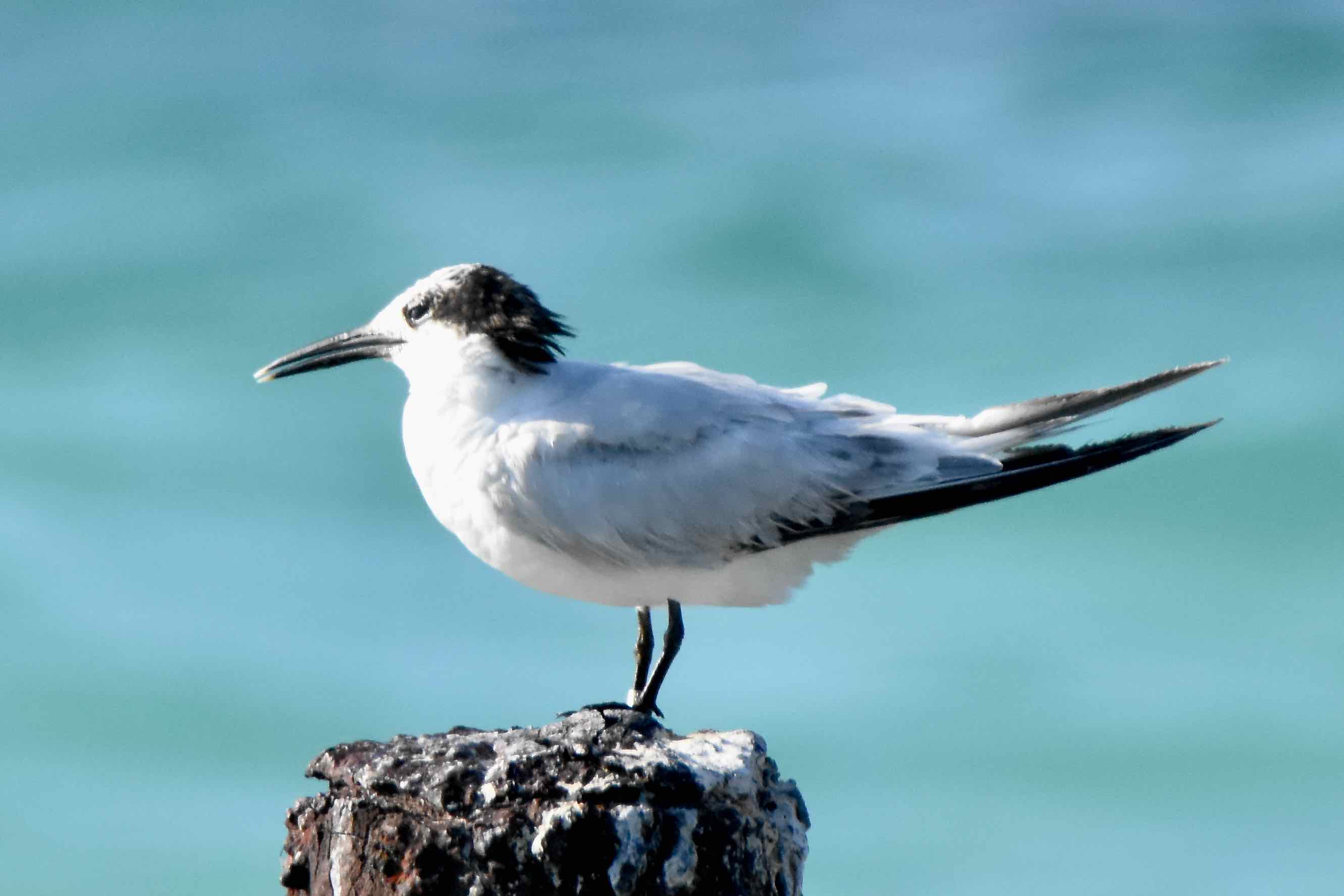
Sandwich tern, photographed at Lighthouse Beach Park, Sanibel, Lee County, in October 2016.
The Sandwich tern stands out in a crowd of sea birds for two characteristics: its shaggy "hairdo" and black bill with a yellow tip. See this combination and without doubt, you're looking at Thalasseus sandvicensis. Actually, the bill is enough to reveal this bird's true identity.
Some say the tip looks like it's been dipped in mayonaise, obviously a reference to sandwich the food item. However, our bird gets its name from the town in England where it was first described. Still, the connection with the condiment makes an easy way to remember how to identify the Sandwich tern. The look of the bill is unique among Florida's terns.
Sandwich terns are fairly common birds along Florida's beaches, usually found in mixed groups of terns and gulls, particularly along side royal terns. They are generally migratory, but there is a year-round population that inhabits coastal Florida from roughly Daytona Beach southward, along our Gulf Coast through Alabama, Mississippi, Louisiana, Texas to Mexico. Sandwich terns are found north of Daytona to Virginia and Delaware during the summer. Winters are spent as far south as the southern reaches of Argentina on the Atlantic side and northern Chile on the Pacific. Sandwich terns are also found in Europe, as evidenced by the name.
According to the Florida Fish and Wildlife Conservation Commission, sandwich terns were once common nesters along Florida's shores, particularly the Gulf Coast, until the late 19th century, when they literally disappeared from the state for reasons that aren't clear. A nesting colony was spotted near Port St. Joe in 1970, and nesting Sandwich tern numbers have increased slowly since.
It's a bird that rarely, if ever, wanders inland. They forage mainly by plunging dive-bomber style after small fish, squid, shrimp and sea worms. They'll also catch bugs while in flight. Fishermen have learned to use foraging Sandwich terns as an indicator that bait fish are in the area.
Sandwich terns have a black crest that covers the forehead in summer but recedes to the back of the head the rest of the year, sort of like male pattern baldness. The back of the crest remains shaggy year-round. The bill also remains the same year-round — the Sandwich is the only shaggy-crested tern with a black bill.
They are white underneath, gray in the wings and back. They have forked tails, and black feet and legs. They're good-sized birds, with a body length of 14 to 18 inches and a wingspan that can approach three-and-a-half feet. There is a subspecies of the Sandwich with a bill that's completely yellow but it patrols the Atlantic Coast of South America. There was a DNA study done in 2009 that found that European and North American Sandwiches should be divided into separate species, but as of this writing, taxonomists still classify them as one.
Sandwich terns nest in large, mixed colonies of sea birds, again often with royal terns. The nest itself is a shallow scrape in the ground sometimes lined with whatever material is available. Females will lay one or two eggs, sometimes three, which will require three to four weeks of incubation before hatching. If the nest is disturbed, the young sandwich terns will leave it and join a group of other young terns called a creche. They can, however, identify the voices of their parents and will join them when called to eat. They'll require between four and five weeks to mature enough to fly, but they will remain with their parents for as long as four more months. They'll require three or four years to reach adulthood.
Sandwich terns are numerous enough to earn a "least concern" rating from the International Union for Conservation of Nature, meaning they're not in danger of going extinct. They are considered a species of special concern in Florida, because of limited nesting habitat.
Sandwich terns are members of Laridae, the family of gulls and terns.
Click on photo for larger image
Links for Sandwich Tern



